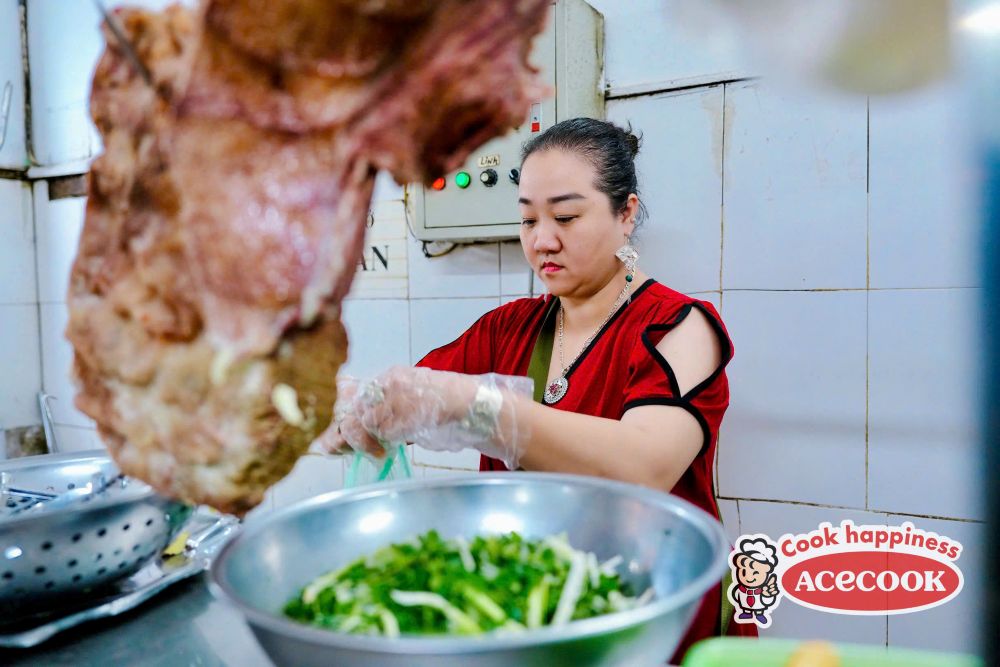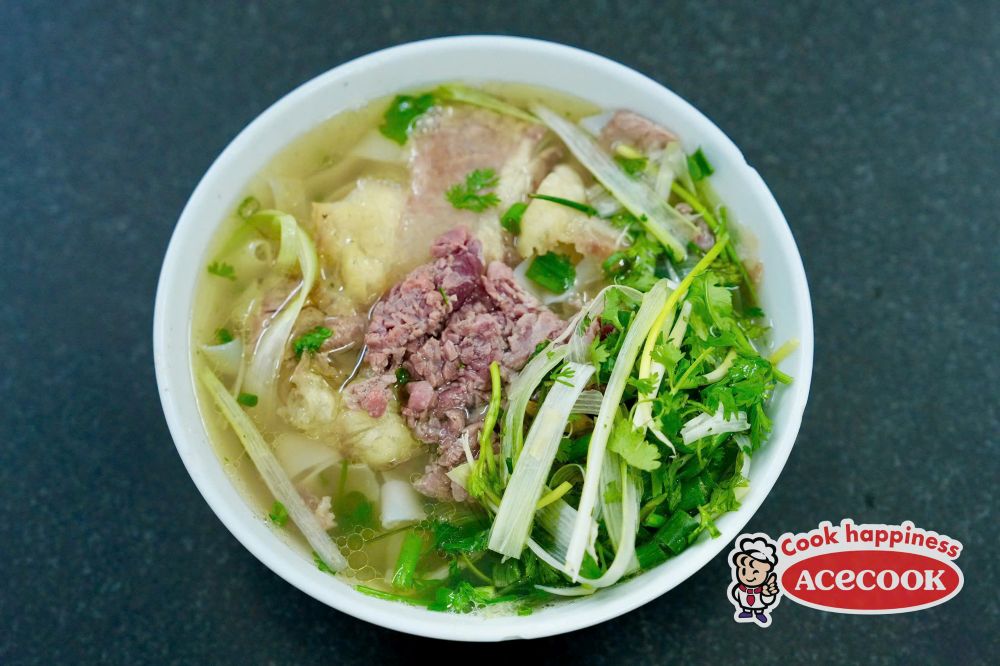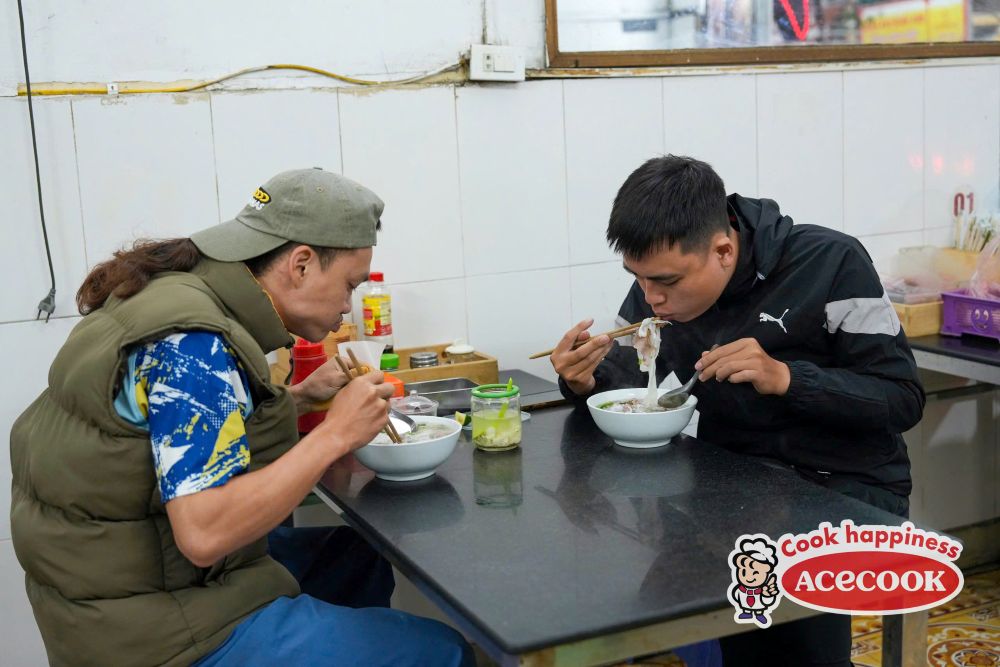Hanoi’s Heart: A Culinary Adventure for Pho Enthusiasts
Hanoi’s culinary scene is renowned for its delicious offerings, and the locals will eagerly direct you to the Hanoi Old Quarter for the best culinary experiences. Among the myriad of dishes, pho, the traditional Vietnamese beef noodle soup, is a standout. In the Hanoi Old Quarter, pho takes on a unique flavor that is hard to replicate elsewhere.
A Noodle Soup Haven
 |
| The iconic pho bo is a harmonious blend of beef, flat rice noodles, and a fragrant, steaming broth. Photo: The Hanoi Times |
Hanoi Pho has gained international acclaim and has been recognized as National Intangible Heritage. This distinction not only elevates the status of the dish but also establishes a framework to safeguard and promote pho recipes and the culture surrounding it.
A survey conducted by the Hanoi Department of Culture and Sports across 18 of the city’s 30 districts revealed 700 pho restaurants that met stringent food hygiene and safety standards. Hoan Kiem district boasts the highest number of pho eateries (32), followed by Ba Dinh (21), Cau Giay (29), Dong Da (9), Hai Ba Trung (30), Thanh Xuan (56), and Long Bien (93).
According to the Hanoi Department of Culture and Sports, long-standing pho brands, often family-owned and specializing in beef or chicken pho, are predominantly found in Hoan Kiem, Ba Dinh, and Hai Ba Trung districts.
Notably, five pho restaurants in Hoan Kiem District have been included in the MICHELIN Guide’s Bib Gourmand Selection 2024: Pho Gia Truyen Bat Dan, Pho Bo Au Trieu, Pho 10 Ly Quoc Su, Pho Ga Nguyet, and Pho Khoi Hoi. Additionally, Pho Ga Cham, also located in Hoan Kiem, secured a spot in the MICHELIN Selected 2024.
Among these, Pho Gia Truyen Bat Dan and Pho 10 Ly Quoc Su have cultivated a loyal following over several decades, and the other recognized restaurants have also established themselves as dining destinations in their own right.
 |
| The intricate broth of pho is flavored with a carefully curated blend of dried spices, including cinnamon, star anise, cloves, cardamom, and coriander. |
Beyond these established restaurants, pho ganh holds a special place in Hanoi’s culinary history. In the past, pho was sold in the Old Quarter by street vendors carrying mobile stalls suspended from wooden yokes on their shoulders. Renowned pho brands, such as Pho Thin Bo Ho, Pho Ong Dao, and Pho Cu Chieu, can trace their origins back to these humble beginnings.
In the 1950s, a hawker named Bui Chi Thin began selling his pho ganh around Hoan Kiem Lake and the Toad Flower Garden before eventually setting up a permanent shop, Pho Thin Bo Ho, on Dinh Tien Hoang Street.
Pho Ong Dao, located on Hang Giay Street in the same district, owes its existence to a hawker named Vu Van Tam, who plied his trade between Nguyen Thien Thuat Street and Tran Nhat Duat Street. Another pho ganh pioneer, Cu Nhu Than, passed on his knowledge to his five children, one of whom established the well-known Pho Cu Chieu brand on Hang Dong Street, while another opened Pho Gia Truyen Bat Dan in Hoan Kiem.
Preserving a Culinary Legacy
The Hanoi Department of Culture and Sports, in their efforts to recognize Hanoian Pho as a national intangible cultural heritage, has noted significant changes in pho locations, recipes, and dining culture.
 |
| Hanoian Pho has captivated the hearts and taste buds of countless diners. |
The challenge of preserving pho heritage is evident, as not many pho restaurants can withstand the test of time, especially those with unique flavors that have become renowned in Hanoi. The secret to each brand’s distinct flavor lies in the family’s closely guarded knowledge of ingredient selection, spice blends, and cooking techniques. These secrets are typically passed down orally within the family, with few written records, and it is rare for a pho brand to reveal its recipe to outsiders.
Like many traditional crafts, the pho trade faces a shortage of successors, as younger generations have a broader range of career options and global migration trends influence their choices. This issue will be addressed during discussions at the Hanoi Culinary Culture Festival 2024, where Hanoi’s Pho heritage will be a key topic.
 |
| The intricate preparation and cooking process is what gives Hanoi pho bo its unparalleled flavor. |
Do Dinh Hong, Director of Hanoi’s Department of Culture and Sports, hopes that the festival, taking place from November 29 to December 1, will offer visitors a deeper understanding of Hanoi Pho’s cooking techniques and unique dining culture. The event will also include a ceremony to commemorate Hanoi Pho’s recognition as a national intangible cultural heritage, serving to promote local culinary traditions and attract both domestic and international tourists.
Hanoi’s culinary prowess has been acknowledged by Lonely Planet, which ranks Vietnam among the top destinations for bowl foods worldwide. Business Insider has also featured pho as a must-try dish, and The Travel has included Vietnam in its Top 10 list for Best Food in the World.
|
The Hanoi Culinary Festival 2024, themed “Hanoi Connects The World,” will take place from November 29 to December 1 at Thong Nhat Park in Hai Ba Trung District, Hanoi. This festival aims to celebrate, preserve, and promote the rich cultural and culinary heritage of the city, with a particular focus on pho, the beloved traditional Vietnamese beef noodle soup. Over three days, attendees will have the opportunity to indulge in traditional Hanoi pho dishes and experience the innovative “digital pho,” prepared and served by smart robots, offering a glimpse into the future of this iconic dish. Approximately 80 culinary booths will be present at the festival, showcasing a diverse range of dishes and products from foreign embassies in Vietnam, traditional craft villages in Hanoi, and culinary specialties from across the country. Through its distinctive cuisine, Hanoi reinforces its appeal as a captivating destination for travelers from near and far. |
Taste the World: International Food Festival 2024 Showcasing 60 Countries and Territories.
This year’s festival boasts an impressive array of new features, including exquisite culinary showcases, captivating art performances, and a host of playful activities. The highlights are the Beer Festival, Culinary Passport, and Cuisine on a Plate, offering a unique and entertaining experience for all attendees.
Unlocking Hanoi’s Suburban Charm: A Guide to the City’s Untapped Tourism Potential
To transform Quoc Oai District into a must-visit destination, the local government has embarked on a journey to enhance service quality and forge strategic partnerships with travel agencies. By including the district’s unique attractions in tour itineraries, they aim to create a captivating experience that will draw visitors from near and far.
Vietnam’s Capital Unveils Indochina’s Premier Biology Museum
For the very first time, the diverse and rare wildlife of Indochina is being showcased to the world. This region, encompassing Vietnam, Laos, and Cambodia, has an abundance of unique and endangered species that are now on full display for all to see. It is a celebration of nature’s wonders and a chance to appreciate the beauty and fragility of our planet’s biodiversity.
The Magic Straw: A Hanoi Artisan’s Enticing Creations
Artisan Nguyen Tan Phat is a master of his craft, creating breathtaking toy creatures from straw that would otherwise be discarded. His unique talent brings to life an array of animals, including majestic buffaloes, graceful horses, vibrant birds, and intricate dragonflies. Phat’s creations are not just toys but works of art that captivate the hearts of locals and travelers alike, leaving a lasting impression and a sense of wonder.
The post Hanoi’s Heart: A Culinary Adventure for Pho Enthusiasts appeared first on https://vietexplorer.com.





Nhận xét
Đăng nhận xét